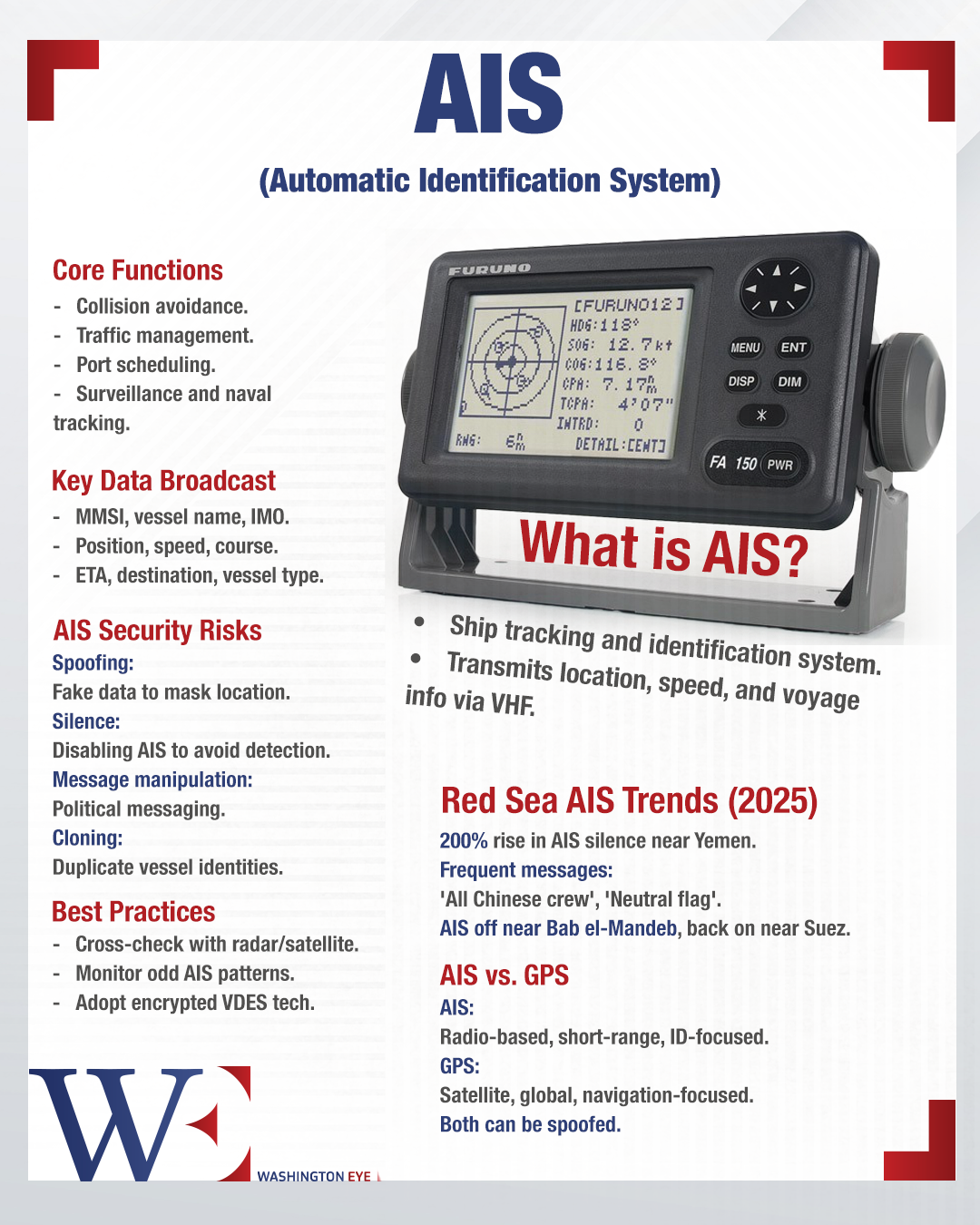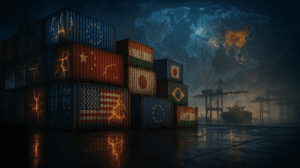In an era where cyber disruption and asymmetric warfare are rapidly reshaping global security, the Red Sea has emerged as one of the most dangerous maritime corridors on the planet. What once served as a vital artery connecting East and West—through the Bab el-Mandeb Strait and on to the Suez Canal—is now the setting for GPS spoofing, ship rerouting, geopolitical brinkmanship, and open threats from Yemen’s Houthi rebels.
This crisis has not come about overnight. Since the escalation of the Israel-Gaza conflict in late 2024, the Houthis have inserted themselves firmly into the regional theatre, exploiting geography, ideology, and sophisticated technology. For commercial shipping companies, particularly those operating vessels near Israel or through the Red Sea, navigating these waters now demands more than seamanship—it requires digital subterfuge, strategic deception, and calculated risk.
A Ship in the Sahara?
The grounding of the MSC Antonia in May 2025 jolted the shipping world into acknowledging how vulnerable global logistics has become. The vessel, a large container ship carrying thousands of tonnes of cargo, suddenly veered off course near the Eliza Shoals, just south of Jeddah Port. Confusingly, AIS (Automatic Identification System) data momentarily displayed the Antonia as being in the Sahara Desert—hundreds of kilometers inland from any navigable waterway.
Of course, the ship was not magically transported into the desert. What occurred was likely a textbook case of GPS spoofing: false signals fed into the ship’s navigation system, tricking it into believing it was somewhere else entirely. While such cyberattacks have been theorized for years, their real-world implementation marks a dangerous escalation. The implications for maritime safety are profound—spoofed signals not only lead to accidents but could also redirect ships into hostile zones.
The Antonia was one of over 180 vessels that reported similar anomalies in Q1 2025 alone. While the precise source of the interference remains uncertain, suspicions have fallen on state-backed actors and sophisticated regional militias aiming to destabilize global trade or exert political leverage.
Disappearing Vessels and Digital Camouflage
One of the emerging trends among Red Sea shippers is what some analysts are calling “digital opacity.” Ships are increasingly masking their digital footprints, switching off transponders, spoofing destinations, or broadcasting politically strategic AIS messages. “No relationship to Israel” and “All Chinese crew” are just some of the broadcast messages now appearing as vessels attempt to distance themselves from the Israeli state or any perceived Western alliance.
Other tactics include VPN-based routing of AIS data, rerouted relay chains, and even geofencing to obscure a ship’s identity and route until it reaches safer harbors. While this cat-and-mouse game offers temporary protection, it also presents real dangers to maritime safety and navigation. When ships disappear digitally, they become harder to rescue, track, or even avoid—especially in congested waters.
This growing trend of vessels “going dark” has increased by more than 200% in the past six months. Maritime AI platforms monitoring the region have flagged a consistent pattern: ships disable AIS transponders near the Yemeni coastline and reactivate them once safely in the Gulf of Aden or closer to the Suez Canal.
Haifa: The New Frontline
In May 2025, Houthi military spokesperson Yahya Saree issued a chilling warning: any vessel bound for the Israeli port of Haifa would be considered a target. His statement wasn’t buried in obscure broadcasts; it was delivered via televised announcement, in clear Arabic, and rebroadcast across international media.
This was more than a threat; it was a declaration of a maritime siege. Haifa Port, one of Israel’s largest and most strategic trade hubs, now finds itself at the center of a shadow war. The Houthis claim that any cargo aiding the Israeli economy is a legitimate target. For shipping firms, even the mere association with Israeli-linked ports can mean elevated insurance premiums, re-routed journeys, or worse: being struck by drones, missiles, or remote-controlled explosive boats.
And the Houthis are not bluffing. In recent months, vessels with alleged ties to Israel have been attacked, damaged, or forced to alter course. Despite the Houthis entering a temporary ceasefire agreement with the United States—brokered with Omani assistance in early May—they have made it clear that their campaign against Israel will continue unabated. In their view, the truce does not extend to what they call the “Zionist entity.”
A U.S. Exit, A Vacuum Emerges
Following the ceasefire, the United States Navy began a slow but deliberate withdrawal from the Red Sea theatre. The USS Harry S. Truman, after a turbulent deployment including the loss of multiple aircraft, is returning to its homeport in Norfolk. That leaves only the USS Carl Vinson operating in the broader region.
This drawdown is significant. While it signals a de-escalation between the U.S. and the Houthis, it also creates a vacuum that could embolden the rebels or other regional actors. If the Red Sea becomes a de facto contested zone without robust international enforcement, shipping companies may face a future where private security, evasive navigation, and digital camouflage are standard operating procedures.
Ironically, the U.S. move was meant to protect its forces and reduce entanglement. Yet the side effect may be a more fractured and dangerous operating environment for everyone else. Without a permanent stabilizing presence, the Red Sea risks becoming a maritime Wild West.
Where Do We Go From Here?
What we are witnessing is not merely a temporary shipping disruption—it is the dawn of a new operational paradigm in maritime logistics. The age of open seas and transparent shipping lanes is rapidly being replaced by one of disinformation, cyber interference, and proxy threats.
Shipping companies must now invest not only in hulls and fuel but in cybersecurity, intelligence gathering, and strategic communications. Maritime insurers, too, are rethinking risk models, factoring in not just piracy or weather, but geopolitical allegiances and digital vulnerabilities.
And governments must respond in kind. Simply deploying a few naval vessels or issuing advisories is no longer enough. Multilateral frameworks need to adapt. Maritime law must evolve to account for spoofing, signal masking, and hybrid threats. There must be clarity about how to respond to non-state actors deploying military-grade technology on commercial targets.
A Closing Note
The grounding of the Antonia, the targeted threats on Haifa, the eerie silence of ships running dark—it all paints a picture not of isolated events, but of a broader transformation. The Red Sea is the canary in the coal mine. If we fail to take this moment seriously, we may find that similar crises will unfold in the Strait of Hormuz, the South China Sea, or the Caribbean.
Vessels once proudly flew their flags. Today, they whisper lies to the satellites above them.
And in those lies, a new kind of maritime warfare is being waged.



















